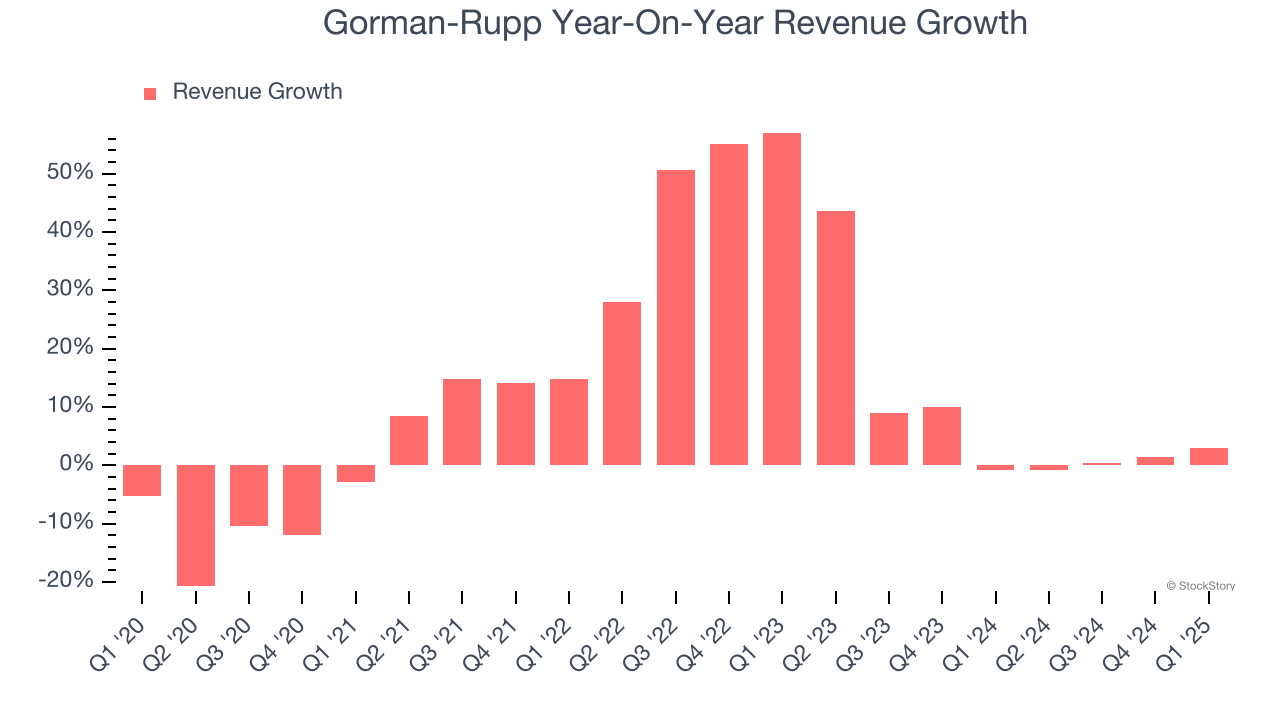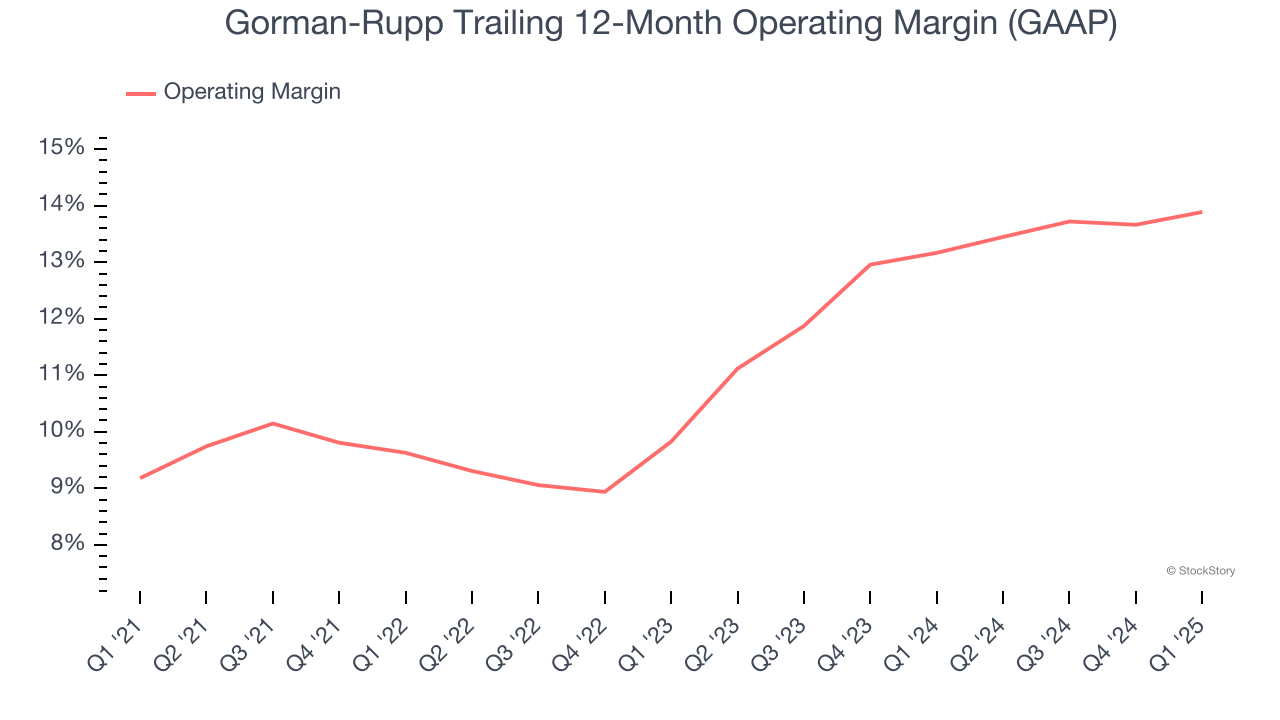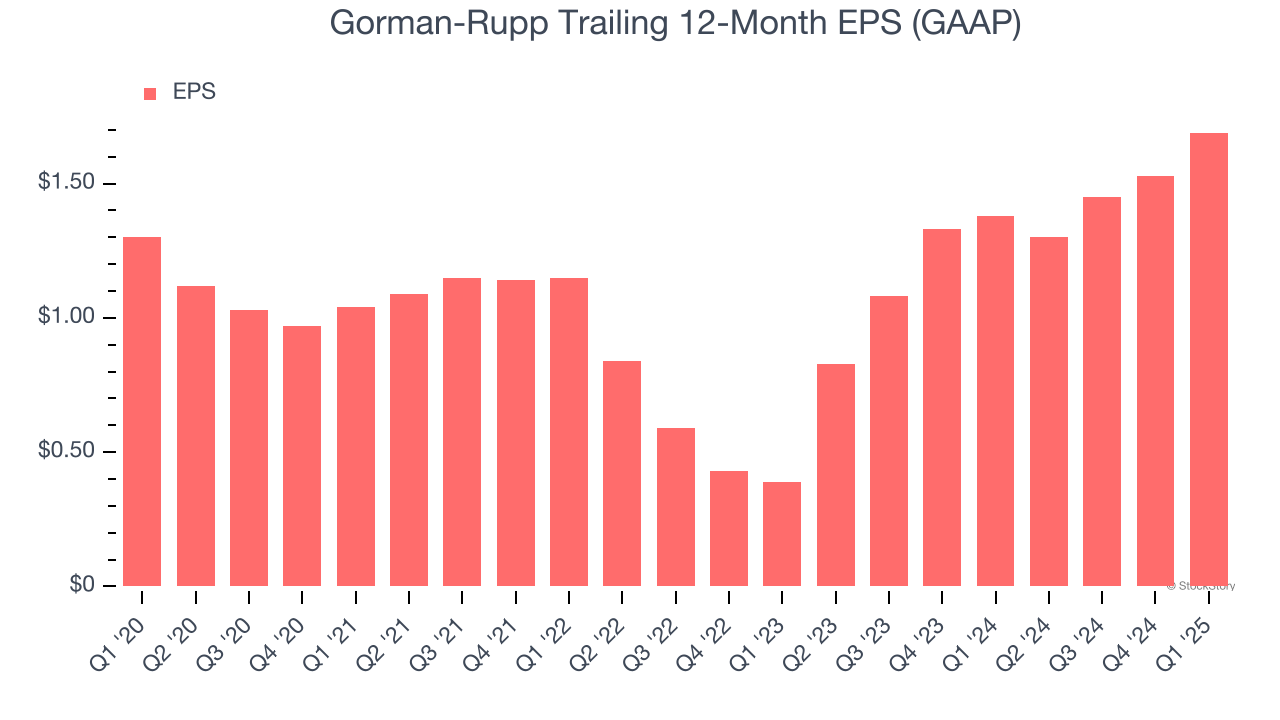
Gorman-Rupp (NYSE: GRC) manufactures and sells pumps globally. missed Wall Street’s revenue expectations in Q1 CY2025 as sales rose 2.9% year on year to $163.9 million. Its GAAP profit of $0.46 per share was 4.5% above analysts’ consensus estimates.
Is now the time to buy Gorman-Rupp? Find out by accessing our full research report, it’s free.
Gorman-Rupp (GRC) Q1 CY2025 Highlights:
- Revenue: $163.9 million vs analyst estimates of $164.8 million (2.9% year-on-year growth, 0.5% miss)
- EPS (GAAP): $0.46 vs analyst estimates of $0.44 (4.5% beat)
- Adjusted EBITDA: $29.7 million vs analyst estimates of $28.62 million (18.1% margin, 3.8% beat)
- Operating Margin: 13.5%, in line with the same quarter last year
- Free Cash Flow Margin: 11%, up from 4.3% in the same quarter last year
- Backlog: $217.8 million at quarter end
- Market Capitalization: $874.4 million
Company Overview
Powering fluid dynamics since 1934, Gorman-Rupp (NYSE: GRC) has evolved from its Ohio origins into a global manufacturer and seller of pumps and pump systems.
Gas and Liquid Handling
Gas and liquid handling companies possess the technical know-how and specialized equipment to handle valuable (and sometimes dangerous) substances. Lately, water conservation and carbon capture–which requires hydrogen and other gasses as well as specialized infrastructure–have been trending up, creating new demand for products such as filters, pumps, and valves. On the other hand, gas and liquid handling companies are at the whim of economic cycles. Consumer spending and interest rates, for example, can greatly impact the industrial production that drives demand for these companies’ offerings.
Sales Growth
A company’s long-term performance is an indicator of its overall quality. Any business can put up a good quarter or two, but the best consistently grow over the long haul. Thankfully, Gorman-Rupp’s 11.1% annualized revenue growth over the last five years was impressive. Its growth beat the average industrials company and shows its offerings resonate with customers, a helpful starting point for our analysis.

We at StockStory place the most emphasis on long-term growth, but within industrials, a half-decade historical view may miss cycles, industry trends, or a company capitalizing on catalysts such as a new contract win or a successful product line. Gorman-Rupp’s recent performance shows its demand has slowed significantly as its annualized revenue growth of 7.1% over the last two years was well below its five-year trend. 
This quarter, Gorman-Rupp’s revenue grew by 2.9% year on year to $163.9 million, falling short of Wall Street’s estimates.
Looking ahead, sell-side analysts expect revenue to grow 4.1% over the next 12 months, a slight deceleration versus the last two years. This projection is underwhelming and suggests its products and services will see some demand headwinds. At least the company is tracking well in other measures of financial health.
Software is eating the world and there is virtually no industry left that has been untouched by it. That drives increasing demand for tools helping software developers do their jobs, whether it be monitoring critical cloud infrastructure, integrating audio and video functionality, or ensuring smooth content streaming. Click here to access a free report on our 3 favorite stocks to play this generational megatrend.
Operating Margin
Operating margin is an important measure of profitability as it shows the portion of revenue left after accounting for all core expenses – everything from the cost of goods sold to advertising and wages. It’s also useful for comparing profitability across companies with different levels of debt and tax rates because it excludes interest and taxes.
Gorman-Rupp has managed its cost base well over the last five years. It demonstrated solid profitability for an industrials business, producing an average operating margin of 11.6%. This result was particularly impressive because of its low gross margin, which is mostly a factor of what it sells and takes huge shifts to move meaningfully. Companies have more control over their operating margins, and it’s a show of well-managed operations if they’re high when gross margins are low.
Analyzing the trend in its profitability, Gorman-Rupp’s operating margin rose by 4.7 percentage points over the last five years, as its sales growth gave it operating leverage.

This quarter, Gorman-Rupp generated an operating profit margin of 13.5%, in line with the same quarter last year. This indicates the company’s cost structure has recently been stable.
Earnings Per Share
We track the long-term change in earnings per share (EPS) for the same reason as long-term revenue growth. Compared to revenue, however, EPS highlights whether a company’s growth is profitable.
Gorman-Rupp’s EPS grew at an unimpressive 5.4% compounded annual growth rate over the last five years, lower than its 11.1% annualized revenue growth. However, its operating margin actually expanded during this time, telling us that non-fundamental factors such as interest expenses and taxes affected its ultimate earnings.

Like with revenue, we analyze EPS over a shorter period to see if we are missing a change in the business.
Gorman-Rupp’s two-year annual EPS growth of 108% was fantastic and topped its 7.1% two-year revenue growth.
In Q1, Gorman-Rupp reported EPS at $0.46, up from $0.30 in the same quarter last year. This print beat analysts’ estimates by 4.5%. Over the next 12 months, Wall Street expects Gorman-Rupp’s full-year EPS of $1.69 to grow 25.4%.
Key Takeaways from Gorman-Rupp’s Q1 Results
We enjoyed seeing Gorman-Rupp beat analysts’ EBITDA expectations this quarter. We were also happy its EPS outperformed Wall Street’s estimates. On the other hand, its revenue slightly missed. Overall, this quarter had some key positives. The stock remained flat at $35.25 immediately after reporting.
So do we think Gorman-Rupp is an attractive buy at the current price? If you’re making that decision, you should consider the bigger picture of valuation, business qualities, as well as the latest earnings. We cover that in our actionable full research report which you can read here, it’s free.







